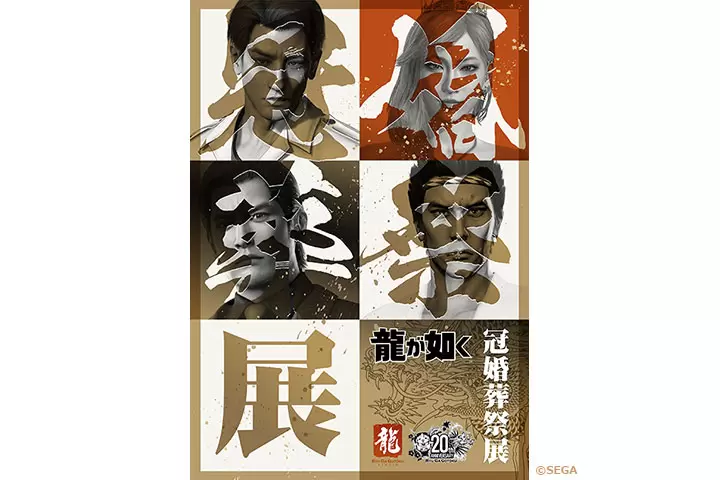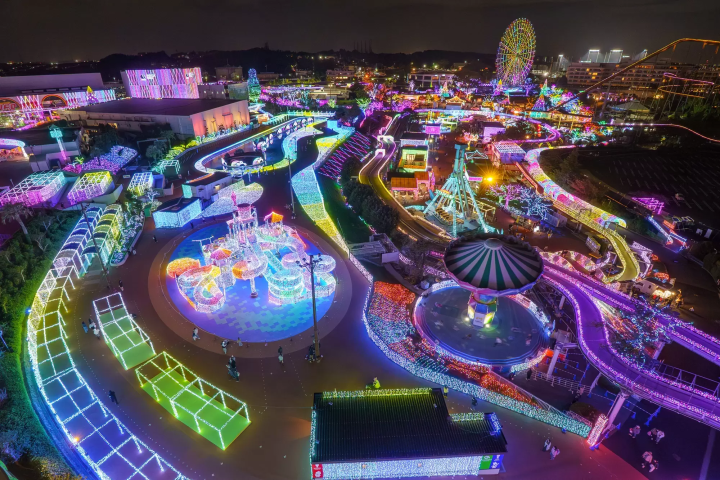[Tosashimizu City, Kochi Prefecture] Visiting Shrines and Temples (Western Tosashimizu City Part 1)
![[Tosashimizu City, Kochi Prefecture] Visiting Shrines and Temples (Western Tosashimizu City Part 1)](https://resources.matcha-jp.com/resize/720x2000/2024/04/01-175884.webp)
This is the third in a series introducing shrines and temples in Tosashimizu city, including the 38th temple, Kongofukuji, which is a famous temple representing Tosashimizu city.
Introduction
The most famous temple in Tosashimizu city is the 38th temple, Kongobuji, but there are also many other shrines and temples that are deeply rooted in daily life.
In this series, we have picked out some of the many shrines and temples that are as easily accessible as possible.
This is the third installment and features part 1 of the western part of Tosashimizu City.
-
Table of Contents
- Will your wishes come true? Kanaezaki Kannon-do
- The largest tree in the western part of Kochi Prefecture and the shrines of Kainokawa
- in conclusion
- Related article
Will your wishes come true? Kanaezaki Kannon-do
Due to its location, this Kannon Hall is located on a hilltop in Kanaezaki, which is known as the "Ashizuri Cape of the West."
A magnificent view awaits you at the top of the nearly 80 steps.
Also, the name Kanaezaki (Kanaezaki) is associated with the word "come true," and is known among those in the know as a Kannon who grants wishes.
![[Tosashimizu City, Kochi Prefecture] Visiting Shrines and Temples (Western Tosashimizu City Part 1)](https://resources.matcha-jp.com/resize/720x2000/2024/04/01-175887.webp)
The Kannon Hall is located at the top of a staircase that splits into two and is about 80 steps long.
![[Tosashimizu City, Kochi Prefecture] Visiting Shrines and Temples (Western Tosashimizu City Part 1)](https://resources.matcha-jp.com/resize/720x2000/2024/04/01-175888.webp)
From the square where the Kannon Hall is located, you can see Cape Ashizuri in the distance.
![[Tosashimizu City, Kochi Prefecture] Visiting Shrines and Temples (Western Tosashimizu City Part 1)](https://resources.matcha-jp.com/resize/720x2000/2024/04/01-175889.webp)
Overview of Kanaezaki Kannon-do
There is no entrance gate, so you can visit the shrine 24 hours a day, but there is no lighting at night, so we do not recommend visiting after dark.
Please visit while it is still light out.
The view is also good from daytime to evening.
![[Tosashimizu City, Kochi Prefecture] Visiting Shrines and Temples (Western Tosashimizu City Part 1)](https://resources.matcha-jp.com/resize/720x2000/2024/04/01-175907.webp)
Parking
There are no marked parking lots.
However, the tip of Kanaezaki is wide, and except for the space where cars can pass,
There is space for about 4 to 5 cars, so you can use that.
About the toilets
There are public toilets along the road to Kanaezaki Lighthouse, but the facilities are very old and we do not recommend using them.
If you are coming from Matsuyama or Sukumo, please use the roadside station in Otsuki Town.
If you are coming from Tosashimizu City, please use Tatsukushi West Park or Mejika no Sato Roadside Station.
access
Google Maps
Access by car
From Tosashimizu city center, take National Route 321 for about 30 minutes (about 20 km)
From Tatsukushi, take National Route 321 for about 15 minutes (about 8 km)
Whether you are coming from the east or west, Kanaezaki Tunnel is the landmark.
![[Tosashimizu City, Kochi Prefecture] Visiting Shrines and Temples (Western Tosashimizu City Part 1)](https://resources.matcha-jp.com/resize/720x2000/2024/04/01-175903.webp)
In addition, the old road to the tip of Kanazaki is short in distance, but the width is very narrow.
Please be careful of oncoming vehicles. (There are no guardrails.)
![[Tosashimizu City, Kochi Prefecture] Visiting Shrines and Temples (Western Tosashimizu City Part 1)](https://resources.matcha-jp.com/resize/720x2000/2024/04/01-175902.webp)
Access by public transport
About 5 minutes walk (about 300m) from Kochi Southwest Bus "Kanaezaki" stop
Or, walk for about 10 minutes (approximately 650m) from the "Otsu" bus stop.
From Tosashimizu city, go to "Sukumo Station" From Sukumo and Otsukicho, go to "Shimizu Bus Center" or "Shimizu Plaza Pal Front"
The largest tree in the western part of Kochi Prefecture and the shrines of Kainokawa
Kainokawa is a village located about 2km from Kanaezaki towards the downtown area of Tosashimizu City.
The beach, into which the Kaino River, which gives the village its name, flows, is also known as a surfing spot.
Here we will introduce a giant tree that is said to be the largest in western Kochi Prefecture, a sacred forest blessed with lush vegetation, and the shrines scattered throughout it.
Kainokawa Tenmangu Shrine and Yasaka Shrine
This shrine is located close to the entrance to the Kainokawago village.
The grounds are a plaza where local festivals and other events are held.
![[Tosashimizu City, Kochi Prefecture] Visiting Shrines and Temples (Western Tosashimizu City Part 1)](https://resources.matcha-jp.com/resize/720x2000/2024/04/01-175923.webp)
Yasaka Shrine is located right next to Tenmangu Shrine.
There are also beautiful trees here. (The photo shows Tenmangu Shrine on the right and the torii gate of Yasaka Shrine on the left.)
![[Tosashimizu City, Kochi Prefecture] Visiting Shrines and Temples (Western Tosashimizu City Part 1)](https://resources.matcha-jp.com/resize/720x2000/2024/04/01-175927.webp)
On Shrine
It is located a 1-2 minute walk from Tenmangu Shrine.
It is located at the innermost part of Kainokawago village.
The shrine is small in size, and the main building has been rebuilt in recent years, but the stone walls and lanterns remain, evocative of the fact that it has long been enshrined as the guardian deity of the area.
The sacred forest here at Onjinja Shrine stretches across a narrow residential road to Tenmangu Shrine just before the settlement, and is covered in a variety of vegetation, including the large camphor tree that is its symbol.
![[Tosashimizu City, Kochi Prefecture] Visiting Shrines and Temples (Western Tosashimizu City Part 1)](https://resources.matcha-jp.com/resize/720x2000/2024/04/01-175922.webp)
The largest tree in the western part of Kochi Prefecture
According to a sign made in 1959 (probably remade around 2000), the tree was estimated to be over 500 years old at the time, with a height of about 30m and a trunk diameter of 8m, making it a gigantic camphor tree.
Due to its shape, it has long been known as a sacred tree for praying for safe childbirth, and has attracted many worshippers.
![[Tosashimizu City, Kochi Prefecture] Visiting Shrines and Temples (Western Tosashimizu City Part 1)](https://resources.matcha-jp.com/resize/720x2000/2024/04/01-175914.webp)
Kagatsugayu natural habitat
The photo above shows a stone monument, which was designated a national natural monument in 1949 as the natural habitat of Kagatsugayu, a vine plant that grows wild in southern Shikoku, Kyushu, Okinawa, and other areas.
For more information, please see the links below:
Overview of Kainokawa Shrine and the Great Camphor Tree
Neither shrine has a gate, so you can basically visit 24 hours a day.
However, since it is located within a village and will cause a nuisance to local residents, visiting the shrine at night or early in the morning is not recommended.
Be sure to visit during daylight hours.
![[Tosashimizu City, Kochi Prefecture] Visiting Shrines and Temples (Western Tosashimizu City Part 1)](https://resources.matcha-jp.com/resize/720x2000/2024/04/01-175928.webp)
Parking
There is no parking available for general visitors in the surrounding area.
In addition, the roads in the Kainokawago area are very narrow, so please refrain from parking on the street.
access
Google Maps
Access by car
It is about 25 minutes (approximately 18km) by car from Tosashimizu city center.
Less than 10 minutes by car from Tatsukushi (approximately 6 km)
As mentioned above, bringing a private car is not recommended due to limited parking space.
Access by public transport
Get off at the Kochi Seinan Kotsu bus stop "Kainokawa" and walk for about 2 minutes (about 120m) to Kainokawa Tenmangu Shrine.
About 4 minutes walk to On Shrine (about 240m)
From Tosashimizu city, go to "Sukumo Station" From Sukumo and Otsukicho, go to "Shimizu Bus Center" or "Shimizu Plaza Pal Front"
in conclusion
This time we introduced Kanazaki Kannon-do and three shrines in the Kainokawa area.
Kanazaki Kannon-do is relatively easy to access, and there are other spots nearby such as the Kanazaki Lighthouse and observation deck, but I think the Kainokawago area is quite difficult to get to without public transportation.
However, I think the shrine, surrounded by giant camphor trees and a sacred forest, is worth seeing.
If you like plants, be sure to stop by.
Next time, we will bring you the second part of our introduction to the shrines and temples in the western part of Tosashimizu City.
Related article
The Hata region of Kochi Prefecture is located at the southwestern tip of Shikoku, and is a peninsula that juts out into the Pacific Ocean, facing Tosa Bay to the east and Bungo Channel to the west. It is made up of three cities, two towns, and one village: Hara Village. It is a natural powerhouse rich in blessings, including the nationally famous Shimanto River and Cape Ashizuri, the blessings of the Kuroshio Current that flows along the coast, and the blessings of mountains that boast the largest area of forests in the country.
The contents on this page may partially contain automatic translation.


![[Tosashimizu City, Kochi Prefecture] Visiting Shrines and Temples (Ashizuri Peninsula Part 1)](https://resources.matcha-jp.com/resize/200x2000/2024/03/28-175510.webp)
![[Tosashimizu City, Kochi Prefecture] Visiting Shrines and Temples (Ashizuri Peninsula Part 2)](https://resources.matcha-jp.com/resize/200x2000/2024/03/28-175546.webp)
![[Tosashimizu City, Kochi Prefecture] Visiting Shrines and Temples (Western Tosashimizu City Part 2)](https://resources.matcha-jp.com/resize/200x2000/2024/04/03-176081.webp)



























![[Coupon Available] Recommended Fall/Winter Wear from Scandinavian Brand "Helly Hansen"](https://resources.matcha-jp.com/resize/720x2000/2025/12/15-252920.webp)
![Deep dive into Japanese brands! A tour of famous leather shoe stores with GENSEI & Nin [Otsuka Shoes Edition]](https://resources.matcha-jp.com/resize/720x2000/2025/12/15-252972.webp)